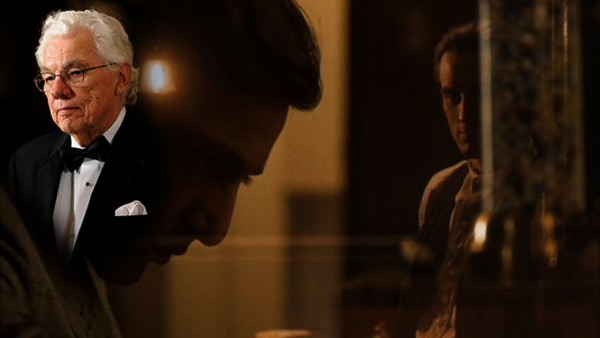Legendary Cinematographer of 'The Godfather' Dies at 82
| Robert Sarkanen | | May 19, 2014 06:46 AM EDT |
Cinematographer Gordon Willis (pictured upper left) and a still from The Godfather Part II.
Gordon Willis, the acclaimed director of photography of "The Godfather" films, died Sunday. He was 82 years old.
Variety said the death of the award-winning cameraman and lighting director was first the Facebook page of his long-time associate, Doug Hart.
Like Us on Facebook
Known in the industry by the affectionate nickname "Prince of Darkness", the New York-born Willis rose to fame in Hollywood during the 1970s for his distinctive shadowy lighting style and minimal camera movement.
His style was said to have defined the look of both his contemporaries as well as modern cinema overall.
Famed film critic Roger Ebert claimed some of the films and scenes Willis shot were famous solely due to his lighting and camera work.
American Society of Cinematographers President Richard Crudo called his death a "momentous loss".
His father was a known make-up artist for Warner Bros. and Willis was initially interested in stage design and lighting before turning to camera work.
He was an Air Force veteran and documentarian prior to his motion picture career, which ended with his retirement in 1997.
His most famous work was The Godfather Trilogy (1972, 1974 & 1990), which became some of the most acclaimed films of all time, winning a total of 9 Academy Awards and 19 nominations.
The first two in the series in particular are often placed at the very top of lists of the world's greatest movies by critics and audiences alike.
During the production of "The Godfather", director Francis Ford Coppola's insistence on using Willis reportedly caused a rift between the producers and the young director, with the producers appalled by Willis dim lighting and deep shadows to represent the moral ambiguity of the characters.
Going against the norm, Willis and Coppola created a highly influential look that went completely against the traditional well-lit faces and backgrounds of contemporary Hollywood cinema.
Instead, Willis let the actors be cloaked in shadows as silhouettes, sometimes for the entire duration of a scene - a look that continues to be used in almost all mainstream thrillers today.
He also started the continued trend in Hollywood of color-tinting entire scenes and films, such as the golden sepia hues of The Godfather, which was then repeated in the sequels as well as other films, such as Chinatown (1974).
Although most famous for The Godfather, Willis' career spanned three decades and included frequent collaborations with famous directors such as Woody Allen and Alan J. Pakula, with whom he made eight and six films respectively.
Drawn to intimate dramas and paranoid thrillers, among his works were Klute (1971), The Parallax View (1974), All the President's Men (1976), Annie Hall (1977), Manhattan (1979), Zelig (1983) and The Purple Rose of Cairo (1985).
He also directed one feature, Windows, in 1980. The lesbian drama-thriller starring Rocky's Talia Shire flopped and was a critical and commercial failure and he never attempted to direct again.
Willis earned two Oscar-nominations, for The Godfather Part II and Zelig respectively, and was awarded an Honorary Oscar in 2009 for "unsurpassed mastery of light, shadow, color and motion". An honor shared by only 7 other cinematographers throughout the 86 year long history of the Academy of Motion Picture Arts and Sciences.
TagsObituary, Cinematographer, Cinematography, The Godfather, Dead, Woody Allen, Alan J Pakula, Oscar-winner
©2015 Chinatopix All rights reserved. Do not reproduce without permission
EDITOR'S PICKS
-

Did the Trump administration just announce plans for a trade war with ‘hostile’ China and Russia?
-

US Senate passes Taiwan travel bill slammed by China
-

As Yan Sihong’s family grieves, here are other Chinese students who went missing abroad. Some have never been found
-

Beijing blasts Western critics who ‘smear China’ with the term sharp power
-

China Envoy Seeks to Defuse Tensions With U.S. as a Trade War Brews
-

Singapore's Deputy PM Provides Bitcoin Vote of Confidence Amid China's Blanket Bans
-

China warns investors over risks in overseas virtual currency trading
-

Chinese government most trustworthy: survey
-

Kashima Antlers On Course For Back-To-Back Titles
MOST POPULAR
LATEST NEWS
Zhou Yongkang: China's Former Security Chief Sentenced to Life in Prison

China's former Chief of the Ministry of Public Security, Zhou Yongkang, has been given a life sentence after he was found guilty of abusing his office, bribery and deliberately ... Full Article
TRENDING STORY

China Pork Prices Expected to Stabilize As The Supplies Recover

Elephone P9000 Smartphone is now on Sale on Amazon India

There's a Big Chance Cliffhangers Won't Still Be Resolved When Grey's Anatomy Season 13 Returns

Supreme Court Ruled on Samsung vs Apple Dispute for Patent Infringement

Microsoft Surface Pro 5 Rumors and Release Date: What is the Latest?










